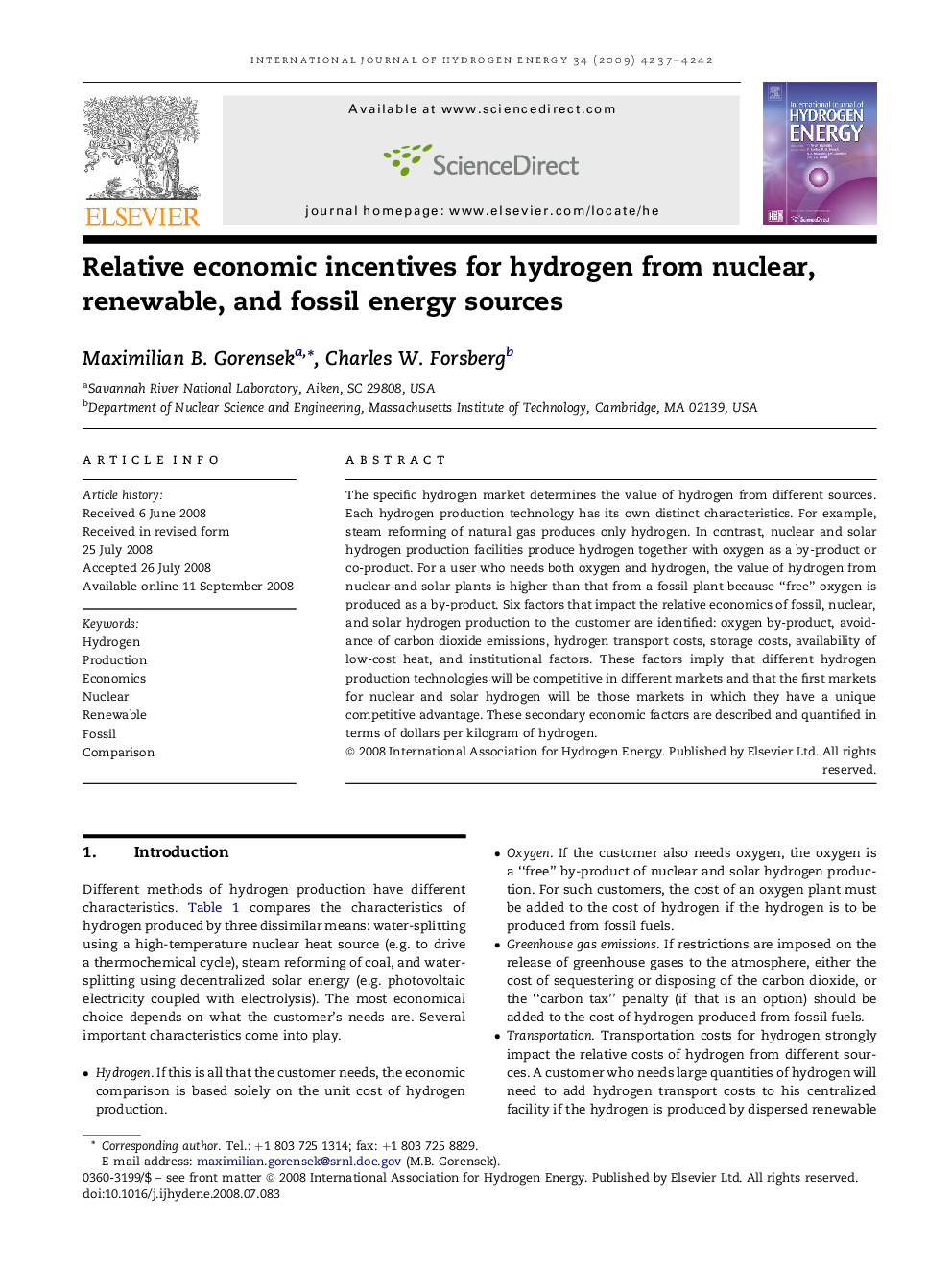| کد مقاله | کد نشریه | سال انتشار | مقاله انگلیسی | نسخه تمام متن |
|---|---|---|---|---|
| 1279058 | 1497633 | 2009 | 6 صفحه PDF | دانلود رایگان |

The specific hydrogen market determines the value of hydrogen from different sources. Each hydrogen production technology has its own distinct characteristics. For example, steam reforming of natural gas produces only hydrogen. In contrast, nuclear and solar hydrogen production facilities produce hydrogen together with oxygen as a by-product or co-product. For a user who needs both oxygen and hydrogen, the value of hydrogen from nuclear and solar plants is higher than that from a fossil plant because “free” oxygen is produced as a by-product. Six factors that impact the relative economics of fossil, nuclear, and solar hydrogen production to the customer are identified: oxygen by-product, avoidance of carbon dioxide emissions, hydrogen transport costs, storage costs, availability of low-cost heat, and institutional factors. These factors imply that different hydrogen production technologies will be competitive in different markets and that the first markets for nuclear and solar hydrogen will be those markets in which they have a unique competitive advantage. These secondary economic factors are described and quantified in terms of dollars per kilogram of hydrogen.
Journal: International Journal of Hydrogen Energy - Volume 34, Issue 9, May 2009, Pages 4237–4242